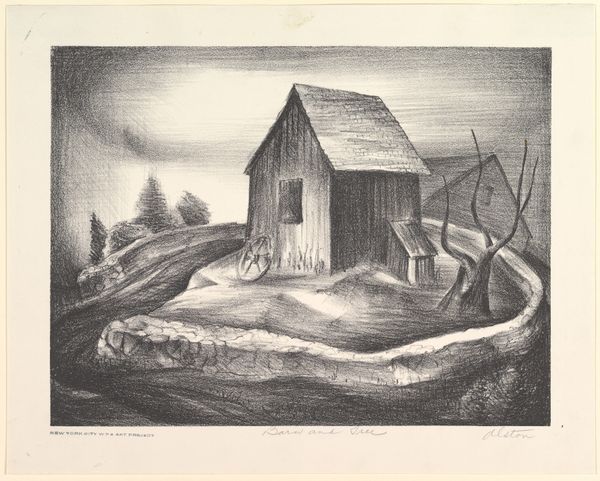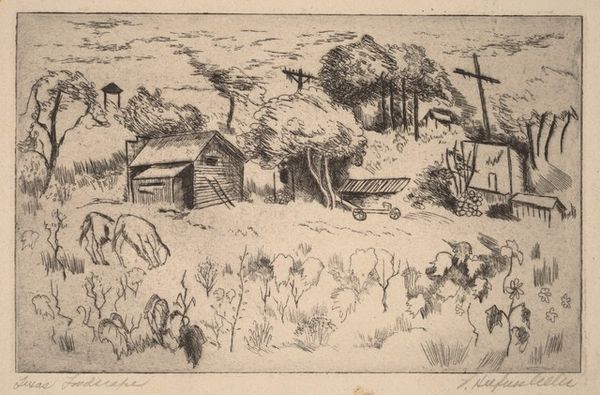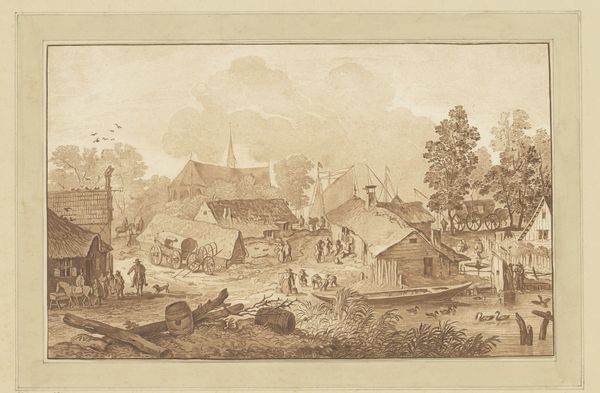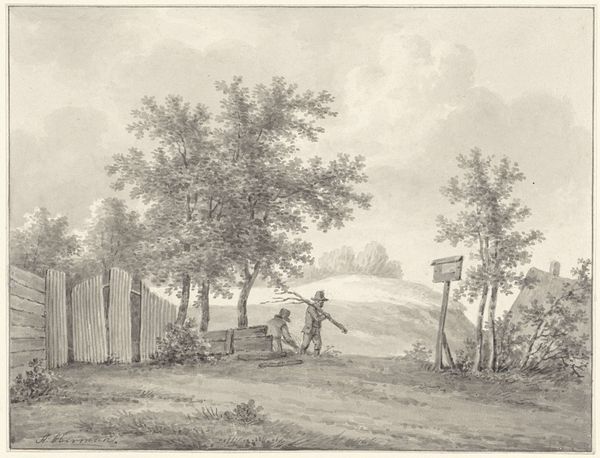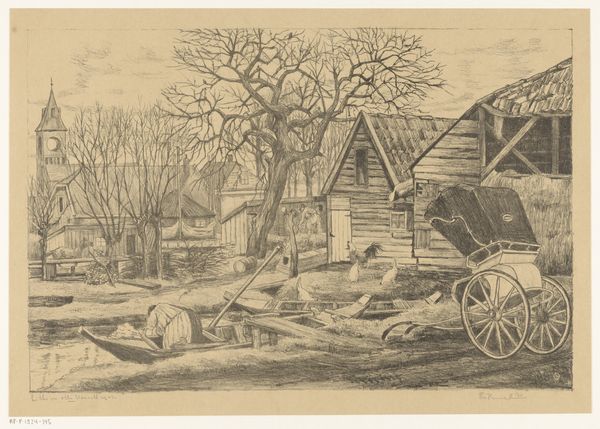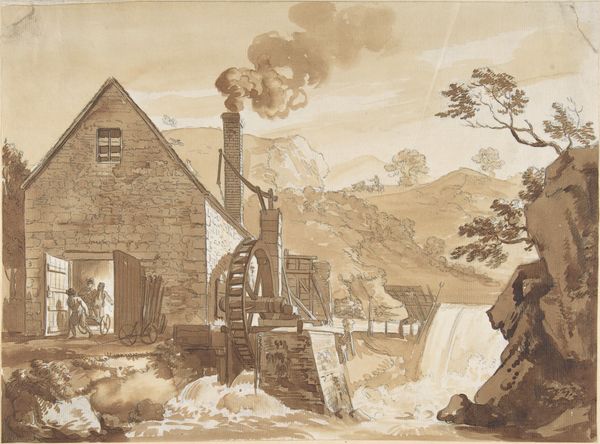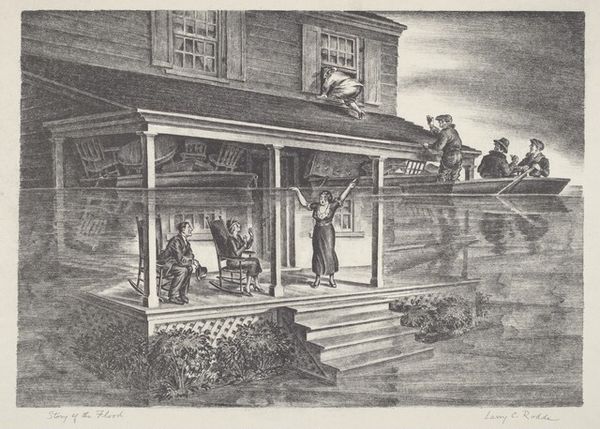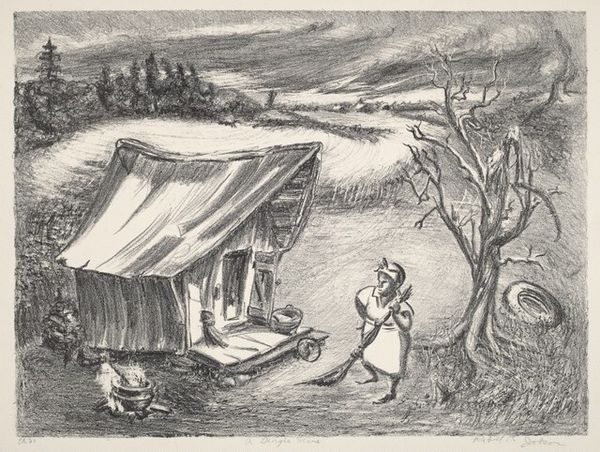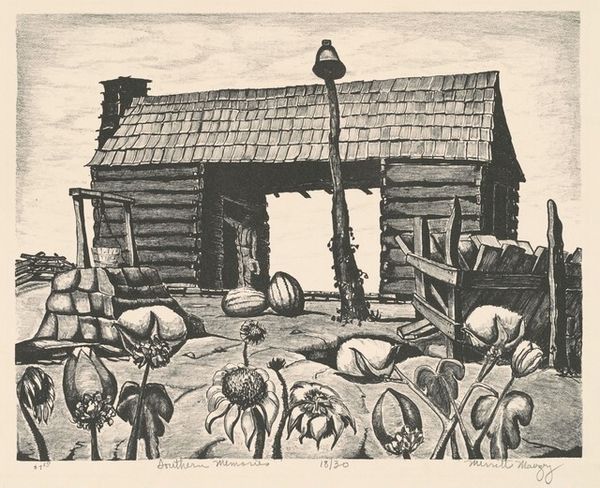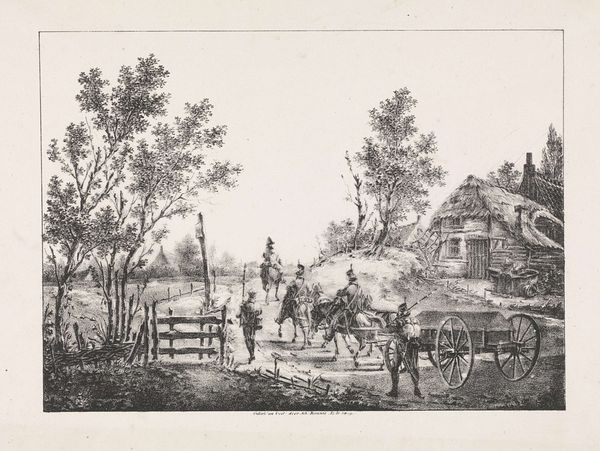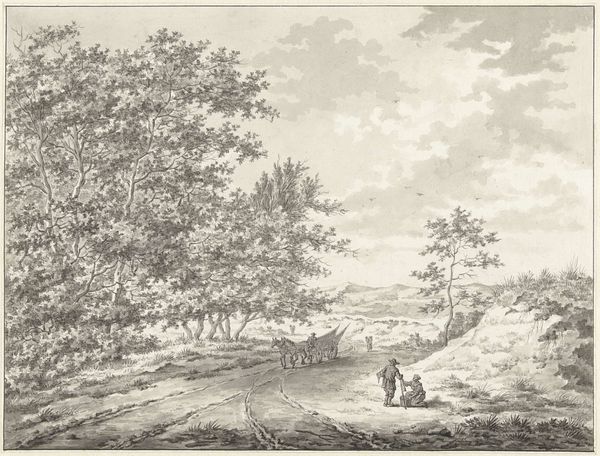
drawing, print, pencil
#
drawing
# print
#
landscape
#
pencil drawing
#
pencil
#
regionalism
#
realism
Dimensions: image: 25 × 38 cm (9 13/16 × 14 15/16 in.) sheet: 33.3 × 43.5 cm (13 1/8 × 17 1/8 in.)
Copyright: National Gallery of Art: CC0 1.0
Curator: This is Prentiss Taylor’s 1935 pencil drawing titled "Connecticut Light and Power." It captures a rural landscape, a farm scene with a rather imposing electrical tower looming in the background. Editor: My immediate response is one of stark contrast. There's the rustic, almost idyllic farm setting juxtaposed with the cold, industrial lines of the power tower. It evokes a sense of encroaching modernity on a traditional way of life. Curator: Exactly. Taylor was working during the Regionalism movement, which focused on depicting everyday American life. Here, you see that influence through his subject matter and through his rather detailed, realistic style. Regionalist art aimed to reflect American values and life of a specific area. Editor: I wonder how viewers at the time reacted. Was this celebrated as progress, or seen as a threat? I imagine for some, the electrical tower represented a connection to the wider world, bringing new possibilities to rural communities. For others, it could've symbolized the disruption of a slower, simpler existence. It’s definitely an artwork that prompts us to consider what it means for “progress” and “civilization” to encroach on established culture. Curator: That is a good question to pose. The drawing style contributes to that feeling, too. The medium—pencil—lends itself well to capturing those minute details in the landscape, as well as to the hard metallic surfaces of the newer components. It provides realism with both new and traditional details in great detail, but lacks the aesthetic qualities that some folks enjoy in art. Editor: And there's also that somewhat bleak atmosphere created by the monochromatic palette and heavy shading. It gives it a sense of seriousness and feels charged with political implications and industrial narratives that changed American lives and cultural understandings about society itself. The contrast invites a profound discourse about our relationship with nature and our unyielding march towards modernization. Curator: It speaks volumes about a pivotal time in American history and how even scenes thought of as untouched become changed, re-shaped, by industry and advancement. Editor: Definitely. This artwork isn't just a pretty picture of farm land; it’s a visual statement of a culture shifting and facing critical transformations in technology.
Comments
No comments
Be the first to comment and join the conversation on the ultimate creative platform.
